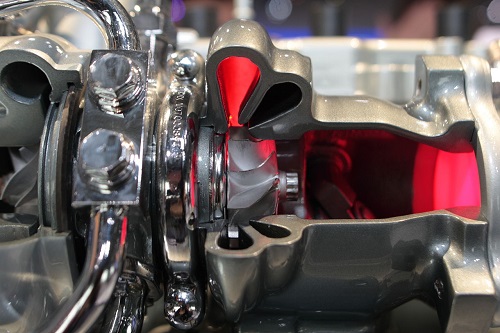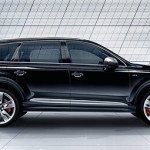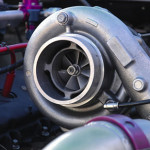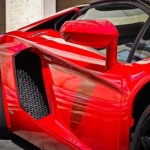What is the difference between turbochargers and superchargers? Is one inherently better than the other? While they both rely on forced-induction to create oxygen-enriched fuel to burn for improved engine performance, there are a few distinguishing characteristics that set them apart. Let’s have a closer look to see what makes them tick:
Superchargers for sale in Malaysia – Contact APT-Turbo for more information.
Turbochargers
A Turbo rely on the kinetic energy of an engine’s exhaust gases to spin its centrifugal compressor. The compressed air is then let into intake manifold where it is mixed with fuel, creating a rich fuel/air mixture, before entering the engine. Because turbochargers rely on exhaust gases it doesn’t put any mechanical load/stress on the engine like superchargers do.
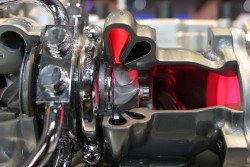
Cut-out model of a twin-scroll turbocharger made by Mitsubishi for the Renault F4Rt engine. Picture courtesy of Wikipedia, Creative Commons.
A turbocharger’s reliance on exhaust gases makes it efficient, since exhaust gases are otherwise released into the environment. Due to advances in material technology, many car and engine manufacturers have adopted turbochargers because of the efficiency that comes with it.
However, turbochargers are affected by turbo-spool, or a ‘lag’ in the time boosts are experienced at low engine RPMs due to the low gas pressures required to turn the turbocharger’s compressor turbine, with a sudden surge of acceleration happening as the gas flow to the turbine reaches the turbocharger’s designated operating parameters.
Superchargers
Superchargers, on the other hand, are mechanically driven. They rely on power transferred from the engine’s crankshaft over a belt, gear or chain drive to spin the supercharger’s compressor turbine.
A supercharger is capable of producing far greater rotations to its turbine compressor at relatively low engine speeds because it isn’t reliant on gradual gas pressure build up that characterizes a turbocharger. This provides increases in speed directly proportional to the speed of the engine.
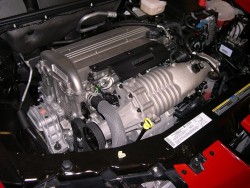
An Eaton MP62 Roots-type supercharger is visible at the front of this Ecotec LSJ engine in a 2006 Saturn Ion Red Line. Picture courtesy of Wikipedia, Creative Commons.
While it isn’t affected by the turbo-spool ‘lag’, engine performance gains are minimal at low RPMs. A supercharger also relies on mechanical energy from the engine to spin its turbine and so as power-efficient as a turbocharger.
A system that uses a combination of supercharger and turbocharger is known as a twincharger.
Did you know?
While Nitrous Oxide itself isn’t flammable itself at low temperatures, it is used to super-cool the air entering the engine. Cooler air is denser, which compacts the oxygen molecules creating an oxygen-rich environment that reacts more readily with the fuel. Nitrous oxide itself breaks down at temperatures in excess of 565 degrees Fahrenheit and provides oxygen as per normal.
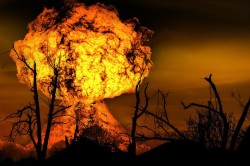
NITRO: Individual Experience May Vary. Picture courtesy of Pixabay.
This can, however, significantly raise temperatures to dangerous levels and cause damage to the engine. If temperatures get too high it could cause the fuel-air mixture to detonate, causing damage to the engine. This also limits its uses on hot days. Nevertheless, superchargers are picked when power and boost response times take precedence over other considerations.
Turbo Kits for Sale – contact APT-Turbo, the best Turbo Supplier in Malaysia.
